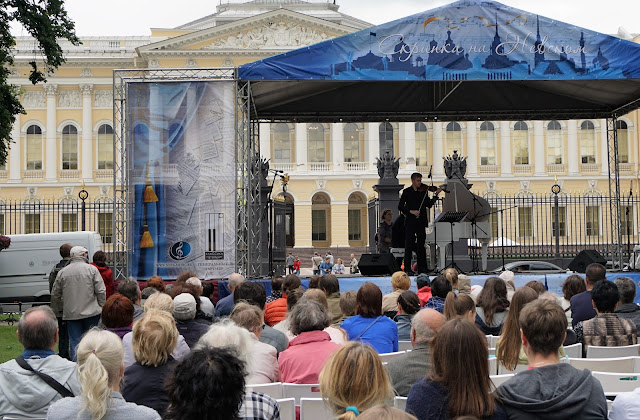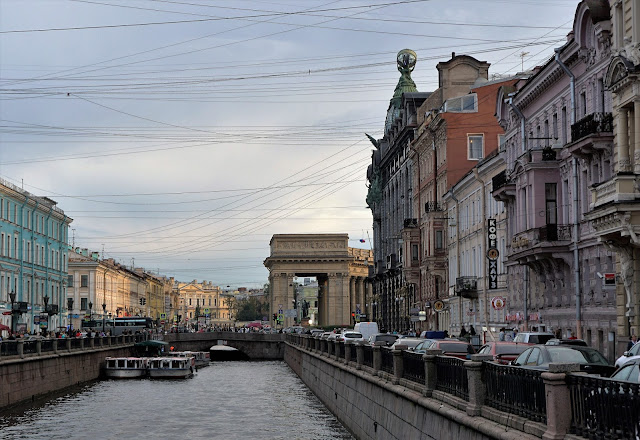So why Saint Petersburg? I had been there many times while growing up in the former USSR. What could we expect to see in the northern capital of Russia, a country which the US press presents as an almost third world country, with oppressed people living under a militaristic autocratic dictator?
I was in St Petersburg 8 years ago, and although the city had changed since the Soviets left there were still too many signs of the city’s socialist past. For readers who didn’t live through those times, the signs included a severe lack of basic civility, clean public toilets and a blind adoration of everything western interwoven with Russian chauvinism. Not a pleasant experience, but something very familiar to people of my generation who were born and grew up in the former USSR. I had heard from more than a few friends who visit Russia frequently that things were different now, but the scale of the changes is only appreciable when you see and feel it on your own.
Saint Petersburg is not just better; it’s almost a different country altogether, one which I didn’t know before. It’s still familiar because of the language, history and culture, of course. It was recognizable not because I remembered it like this, but because I read about it in Russian novels. It was the Saint Petersburg that existed before "developed socialism" was imposed by the Soviets. (The term "developed socialism" is not mine, it was taught to us in school.)
The ruthless authoritarian dictator is nowhere to be seen; and that too was very different from my childhood, i.e. growing up with pictures of our fearless leaders everywhere: Lenin and Brezhnev at the time of my youth. The service in most places is very professional and friendly and in many cases better than you commonly find in US. The streets and public facilities are clean, people and cars follow traffic signs with a German-like obsession. What's more amazing that people are friendly, open, well dressed and very ready to help. They are often relax and happy.
The other amazing thing how many pre-revolutionary palaces which were abandoned and dilapidated under the Soviets have been strikingly restored to their original glory and opened up as museums:
 The Sheremetev family house on Fontanka is now Museum of Music with amazing collection of theater artifacts and musical instruments. It also hosting free classical music concerts in Sheremetev private concert hall.
The Sheremetev family house on Fontanka is now Museum of Music with amazing collection of theater artifacts and musical instruments. It also hosting free classical music concerts in Sheremetev private concert hall. In the attached Fountain house is lovingly preserved and curated Anna Akhmatova house-museum. This is a flat where she lived the major part of her tragic live. The museum is very well documented with a lot of personal artifacts and very informative and emotional tour guide. All windows of the flat are overlooking charming Sheremetev garden. After the visit you feel that her spirit still lives there.

Stroganov Palace restored just couple years ago to its late baroque glory
Faberge Museum in an elegant neo-classical Shuvalov Palace is a treasure filled jewel box which includes a fabulous collection of Faberge eggs recently purchased from Forbes
All new palaces-museums are well curated with wonderful tours and guides in many languages. The staff who work in these museums are clearly well informed and very proud of cultural heritage which has been restored for future generations to learn and enjoy.
The food experience was very similar. The food was familiar not because I had ever eaten like this in Russian restaurants or even homes, but because I read about this in Russian literature. The realization that Russia has rich and unique food culture which came back to life, was another unexpected revelation. In the restaurant "Gogol" not only the food but the service and décor were carefully reproduced including menus and dinner bell
After a few days we ventured beyond the traditional Russian foods to restaurants which serve new European cuisine. The food was amazing at the fraction of the cost you pay anywhere in US or Europe. Here is ceviche in Grand Cru on Fontanka
I was so impressed I even wrote a review of the place: https://www.tripadvisor.com/Restaurant_Review-g298507-d2697534-Reviews-Grand_Cru_Wine_Bar-St_Petersburg_Northwestern_District.html
It is also noticeable that sanctions, which are, of course, hurting the Russian economy, have had a positive side effect on Russian food and agriculture industry. They very rapidly re-learned to raise and produce their own delicious food.
The theater life is better than ever was in Soviet times. The city has three major Opera and Ballet houses and countless drama theaters. There are free events going on in museums and parks. The first weekend we were there - was the last weekend of annual White Nights festival. Free classical music concerts were performed in public spaces and parks with high quality performances and grateful audiences of all ages
The theaters are attended by all generations and families with young kids. The marvelous performance of Romeo and Juliet in Mariinsky theater exceeded even my very high expectations

Most 18th and 19th centuries buildings are lovingly restored and Peter the Great would be proud how much the old city is preserved. The few modern buildings are not obnoxious and don't break architectural unity, which too often can be seen in other old European cities. The prevalence of yellow buildings with white columns and trims was ubiquitous and became on-going joke with my traveling companions
The color scheme sometimes even spilled on crosswalks
And ultimate yellow and white building - The General Staff Building, now part of Hermitage
Walking along canals
Churches large and small and all beautiful each in its own way (some are converted back from the Soviet atheism museums)
Michailovsky castle with portrait museum and concert hall
Some completely unexpected finds like a lovingly restored art-deco masterpiece Au Pont Rouge a home of luxury department store
And of course the Hermitage, the unique collection of art and decorative objects in superbly preserved palace setting (unlike Louvre and many other museums which are just museums now)
And breathtaking grand palace rooms:
Brand new Russian contemporary art museum Erarta on Basil island with spectacular collection of brave new Russian art
In our surrealistic times when the world is falling apart and everything seems to be going to hell, it was delightful to see this old beautiful city revived to its former glory, a state worthy of it’s founder.



















































Wow! Amazing pictures and stories! I'll have to visit soon.
ReplyDeleteKen